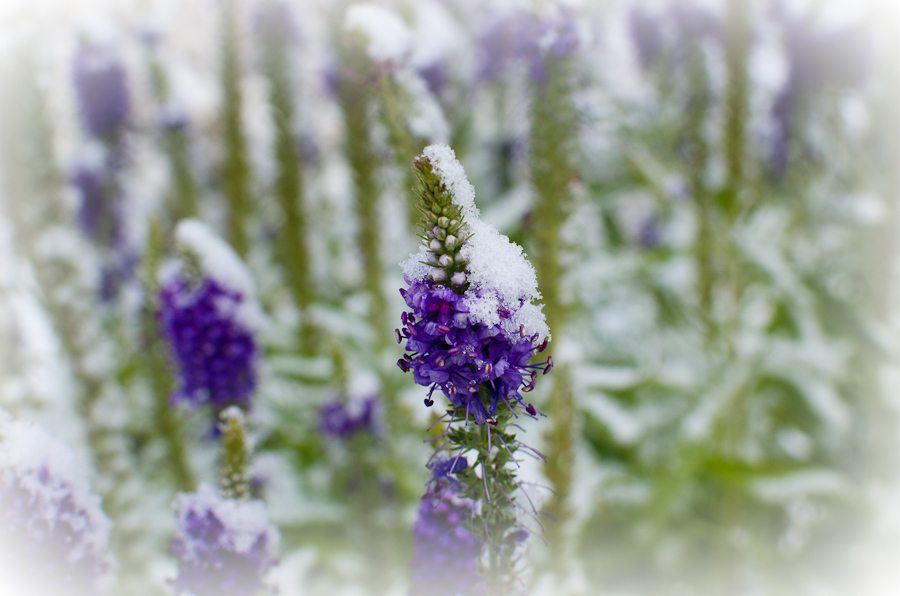
Delphinium is a stately plant with tall, spiky blooms that beautify the garden in a big way during the early summer months. Although these hardy perennials are easy to get along with and require a minimum of care, a few simple steps will ensure they survive winter cold unscathed.
Preparing Delphinium Plants for Winter
In preparation for winterizing delphiniums, water the plants regularly as winter approaches and continue until the ground freezes so hard it can no longer absorb moisture. Don’t water with a sprinkler; get in there with a hose and let it trickle until the roots are thoroughly saturated.
It’s important that the ground is damp going into winter so the roots don’t become too dry. The plant will continue to evaporate moisture through the leaves, but the frozen ground won’t accept water to replace the lost moisture.
Cut the plants down to a height of 6 to 8 inches after the first killing frost in autumn, or if you prefer, you can save this step until spring. A trimmed plant is easier to mulch, but an intact plant provides winter texture to the garden. The choice is yours.
Either way, remove leaves and other plant debris around the plant to discourage disease and pests, including slugs. Apply at least 2 to 3 inches of mulch in late fall, when the ground is cold but not frozen. Use organic mulch such as bark, straw, pine needles, dry grass or chopped leaves. Mulch protects delphinium in a couple of ways:
- It prevents damage caused by freezing and thawing that can freeze the crown.
- It conserves soil moisture.
Avoid using whole leaves as mulch; they will form soggy mats that can smother your delphiniums. If you have leaves you’d like to use as mulch, chop the leaves up by running a mower over them a couple of times first.
Delphinium Winter Care
Once you’ve watered and mulched in autumn, delphinium care in winter is minimal. It’s a good idea to water occasionally during winter months if the ground thaws enough to soak up water.
If you’re an adventurous gardener, you may want to try sowing delphinium seeds in winter. With any luck, the seeds will germinate about the time winter loosens its hold for spring planting.
